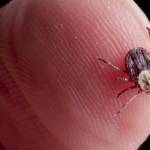Paralysis Tick Threatens Health of Australian Horses

Paralysis ticks (Ixodes holocyclus) are found along Australia’s eastern coast and are most common in areas that have high rainfall. Bites from infected ticks cause paralysis, and horses of any size and age can be unable to stand after only one or two bites.
Although relatively few horses have been affected by the ticks, a retrospective study examined the veterinary records of 103 horses treated over the last 10 years. In this group of horses, the mortality rate was around 26%, which is much higher than the mortality rate of about 5% in small animals. Of the horses that survived, 35% developed secondary complications including pneumonia, pressure sores, corneal ulcers, and sepsis.
The numbers may be somewhat skewed because not every affected horse may have been seen at a veterinary clinic. Horses that were only mildly affected or that received aggressive treatment early in the course of the disease might have recovered without hospitalization and therefore would not have been counted in the study. There are challenges involved in treating a recumbent horse, and many owners are unable to give adequate nursing care to a sick horse because they are limited by available time, facilities, strength, or knowledge.
Some management steps can help horses avoid being bitten by paralysis ticks. These include cutting back brush, grazing horses in pastures with short grass, checking horses daily for ticks, and using insect repellent sprays on horses. Owners who see signs of muscle weakness or paralysis in their horses should get veterinary help as soon as possible.








